Abstract
This study investigated if acid deposition continued to occur in New England through 2008 although government regulations for reducing acid-rain producing emissions were put into effect in the 1990 Clean Air Act. The study established that the emission of nitrogen oxides has persisted over the years because of the increase of sources of nitrogen oxides that is a function of increased population and increased reliance on vehicles.
Outline of the study
Acid deposition has been a matter of environmental concern due to its negative effects on the balance of the ecosystem. This study investigated if acid deposition still continues to occur despite the existence of the 1990 Clean Air Act. Chapter one provides an introduction to acid deposition and the mechanism through which it occurs. Chapter two provides a literature review on acid deposition as a function of processes through which sustained acid deposition has persisted. Chapter three provides the methodology of the study. Chapter four provides the results presentation and chapter five provides the conclusion.
Introduction
Acid deposition occurs as a result of precipitation of particulate fallout of acidic products that drift upwards from their sources of production (NADP, 2000a,11). Acid deposition occurs in form of acid rain or acid snow. The primary contributors of acid deposition include the combustion of fossil fuels and fumes of sulfurous and nitrous gases (NADP, 2000b, 6). Sulfur-based products that result in acid rain are sulfur dioxide and sulfur trioxide. These gaseous products are formed from the combustion of sulfur-containing compounds like coal. Sulfur trioxide dissolves in water vapor to form dilute sulphuric acid (figure 1). Sulfur dioxide dissolves in water vapor to form sulfurous acid which can undergo atmospheric oxidation to form dilute sulphuric acid (figure 2). Nitric acid deposition occurs when nitrogen dioxide gas (Nitrogen IV Oxide) dissolves in water vapor to form nitric acid (figure 3). Nitrogen monoxide (nitrogen II oxide) dissolves in water vapor to form nitrous acid which can undergo atmospheric oxidation to form nitric acid (Figure 4).
Nitrogen monoxide is formed when the oxidation process of nitrogen derivative is exposed to limited oxygen (NADP, 2000c, 75: 2000d, 90). Nitrogen monoxide can undergo atmospheric oxidation to form nitrogen dioxide. The same applies to sulfur dioxide (figure 5).

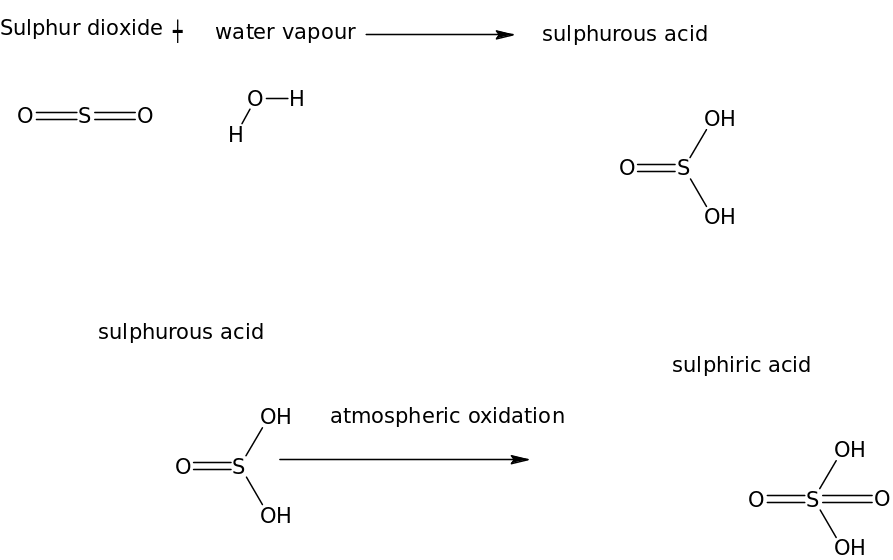



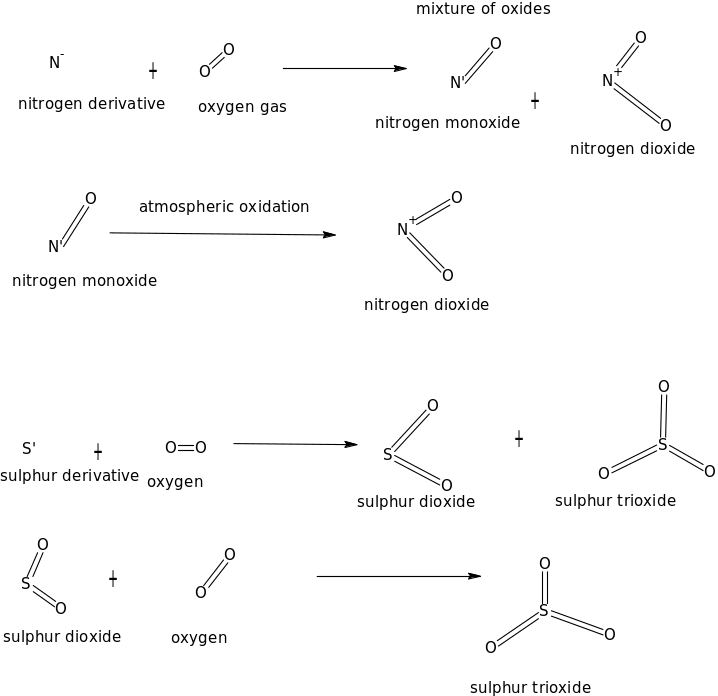
Propagation of acidic particles
The acid deposition can occur at the source or be driven away by the wind for instance in industries around Ohio River Valley.
The effects of acid deposition include an increase in soil acidity that affects the bioavailability of nutrients to plants (NADP, 2000a, 10), leaching of cations like aluminum that have adverse effects on the plants (NADP, 2000d, 8), acid deposition fallout is primary predisposing cause for respiratory problems subject to poor quality of the air and creation of imbalance of ecosystem and negatively affecting soil and water PH especially the aquatic life (Burns, Lawrence & Murdoch, 2000a, 134). Death of aquatic life occurs leading to eutrophication, climate change, and troposphere ozone depletion due to the effect of acidic radicals like chlorine (Burns, Lawrence & Murdoch, 2000b, 145).
Goals and objectives of the studies
To determine if acid deposition had continued in New England through 2008, even though government regulations for reducing acid-rain producing emissions were put into effect in the 1990 Clean Air Act.
Hypothesis for testing
An increase in acidic levels in the soil and water bodies in New England seem to be dependent on the Emission of nitrogen oxides that has persisted despite the 1990 clean air act
Literature review
Effects of acid deposition (figure 6) differ from one location to another and this is governed by the concentration of calcium carbonate that is present (Burns, Lawrence, and Murdoch, 2000b, 145, 146). Calcium carbonate reacts with the acid to form carbonate salts, carbon dioxide, and water. This helps to eliminate the effect of acid deposition by acting as a buffer. Areas that have a high concentration of calcium carbonate are not affected by acid deposition compared to areas that have a low concentration of calcium or magnesium carbonate (Campbell et al, 2000, 39, 40). Clean air Act of 1990 sought to eliminate processes through which acidic gaseous products are produced to have sustainable management for the climate change brought about by acid deposition (NADP, 2009, n.p.).
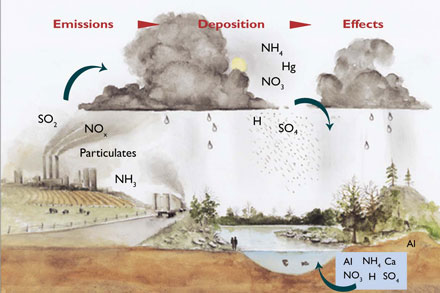
Methodology of the study
The data for the trend plots analysis was to be extracted, a user needs to select units for instance mg/L (milligrams per liter.) For graph, size choose “small” or large from the pull-down menu. Then click on “create plot” at the same which automatically created a graph that appears on the screen, and then I save the graph to the desktop and edited the image.
Data presentation
The data obtained were presented in form of flow charts.
Results
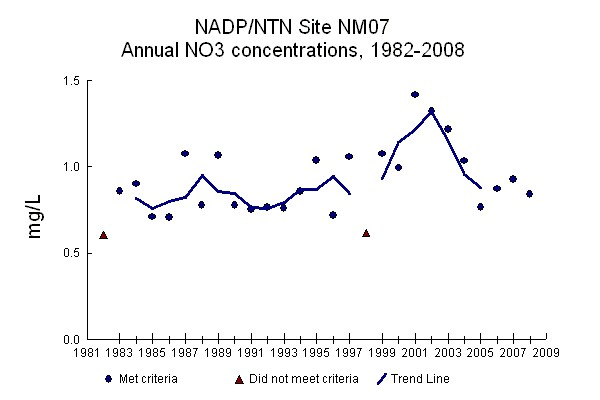
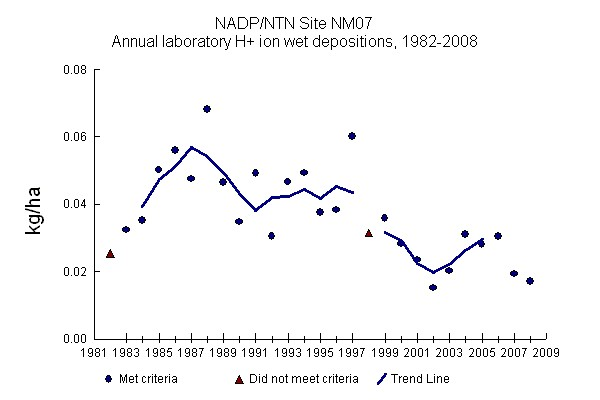
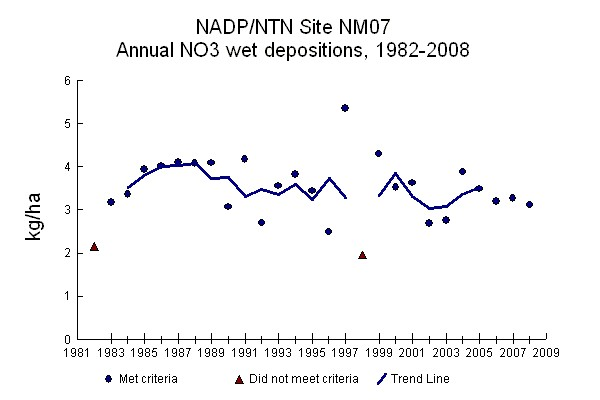
Discussion of the results
From the trend plot, it is evident that the deposition of nitrous oxide or acid deposition resulting from nitrogen oxides has persisted. The acid deposition from nitrogen derivatives have been increasing since 1978 due to increase in the number of vehicles and secondary sources of nitrogen oxide gases. The study has thus achieved his objective. The hypothesis has also been confirmed true.
Conclusion
The results indicate that acid deposition had continued in New England through 2008 despite the fact that government regulations for reducing acid-rain producing emissions were put into effect in the 1990 Clean Air Act. This is due to persisted emission of nitrogen derivatives that have continued to rise over the years making it impossible to manage the increase of acid deposition in the New England and its environs.
Works Cited
Burns, Douglas A., Lawrence, Daniel Welsch. & Murdoch, Peter S., (2000b), Clean Air Act and Acid Precipitation Receiving Increased Attention, EOS, Transactions, American Geophysical Union; 81:134
Burns, Douglas A., Lawrence, Daniel Welsch. & Murdoch, Peter S., (2000a), Effects of Acid Deposition in North America: Current Status. Bulletin of the Ecological Society of America, 81:145-146.
Campbell, Donald.H., Baron, Jill S., Tonnessen, Kathy, A., Brooks, Paul, D., and Schuster. Paul F., (2000) Controls on Nitrogen Flux in Alpine/Subalpine Watersheds, Water Resources Research, 36(1):37-48
NADP, (2009), NADP/NTN Monitoring Location IA23. Web.
National Atmospheric Deposition Program, (2000d), Nitrogen in the Nation’s Rain. NADP Brochure 2000-01. NADP Program Office: Champaign, IL P.13
National Atmospheric Deposition Program, (2000c), Quality Assurance Report, National Atmospheric Deposition Program, 1998, Laboratory Operations, Central Analytical Laboratory, (prepared by J.E. Rothert), NADP Program Office: Champaign, IL. 130 pp
National Atmospheric Deposition Program, (2000b), National Atmospheric Deposition Program 1998 Wet Deposition, NADP Program Office: Champaign, IL. 16 pp.
National Atmospheric Deposition Program,(2000a). National Atmospheric Deposition Program 1999 Annual Summary; NADP Program Office: Champaign, IL. 16 pp.